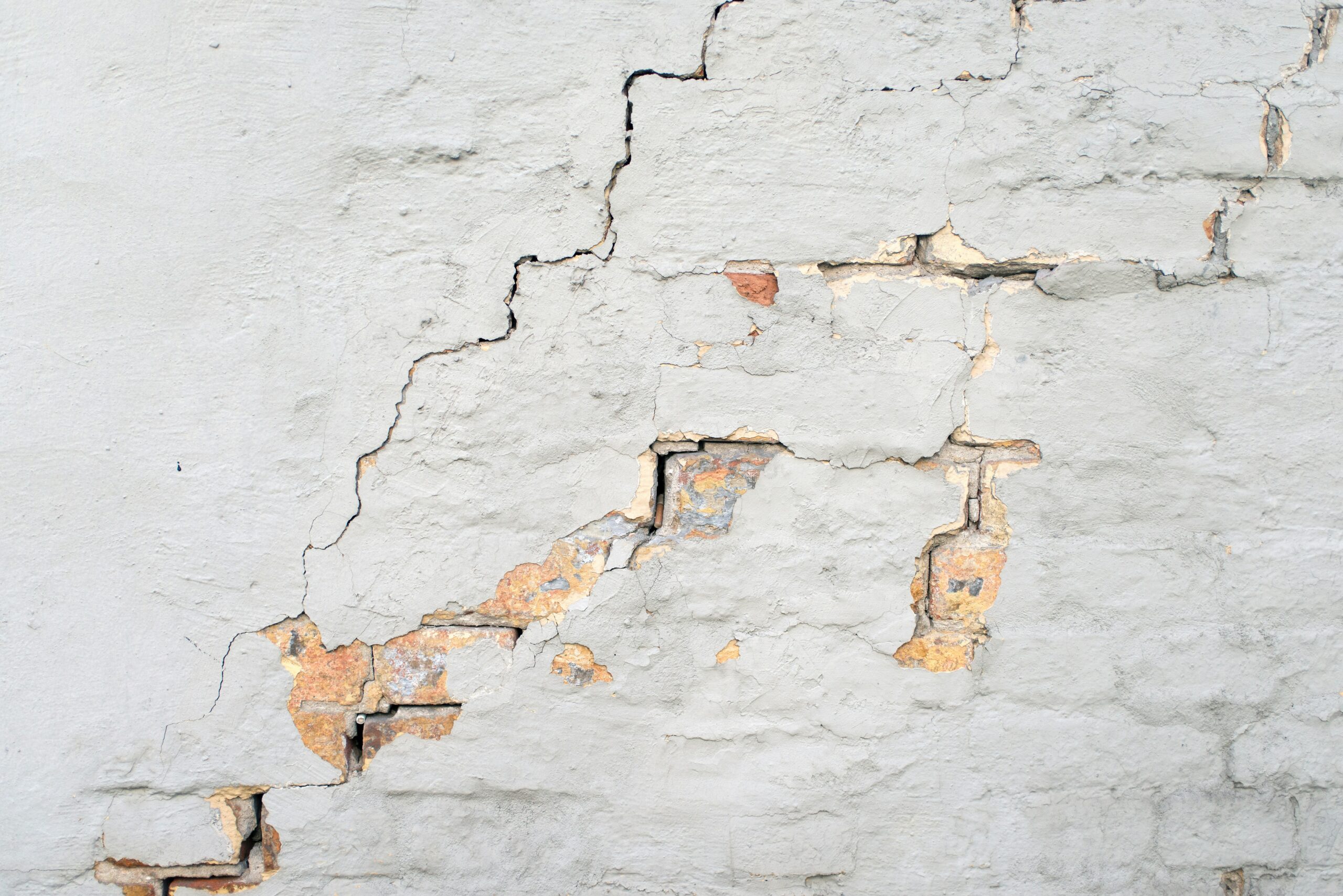
The houses we live in are our homes, shelter, safety and protection from the elements and when we spot things like cracks or potential damage, it can be devastating. More than just a cause for concern, it can trigger stress, anxiety and more. If you’ve spotted a crack in your walls, this anxiety is understandable but they aren’t always a sign of something sinister. Some can be easily remedied while others require more specialist attention, and a home survey can help point you in the right direction. From the causes of wall cracks, to how a home survey can help you determine whether you need to seek assistance, we’ve got you covered:
Understanding the Types of Wall Cracks
A crack in the wall can vary in depth, length, appearance and more, but each one could have a different cause depending on the condition of your property. From hairline cracks that are often harmless, to horizontal cracks that could indicate a structural problem, here are the types that you may face and what they could mean:
- Hairline Cracks: Hairline cracks are thin, shallow cracks that often result from minor settlement or the natural ageing of building materials. These cracks are typically cosmetic and may appear as a result of temperature fluctuations, humidity levels, or minor foundation movement. While hairline cracks are common and usually harmless, they can be a precursor to more significant issues if left unattended.
- Vertical Cracks: Vertical cracks that run straight up and down are commonly associated with settling or minor shifts in the foundation. These cracks may occur near door frames, window openings, or corners of walls. Vertical cracks are usually manageable, but they should be monitored to ensure they do not worsen over time.
- Horizontal Cracks: Horizontal cracks that span across the wall horizontally may indicate more serious structural problems, such as foundation issues or excessive pressure from the surrounding ground. Horizontal cracks can compromise the stability of your home and should be evaluated by a professional as soon as possible.
- Stair-Step Cracks: Stair-step cracks follow a diagonal pattern and are often seen in brick or concrete block walls. These cracks may signify foundation settlement or lateral pressure exerted on the wall. Stair-step cracks should be addressed promptly to prevent further damage and potential structural failure.
When to Consult a Home Surveyor
While minor cracks may not pose an immediate threat, it’s essential to address any concerns promptly to prevent further damage and ensure the safety of your home. At Able Surveyors, we can provide both a RICS Level 3 Building Survey to assess the condition of your property, or specific defect surveys to determine the severity of the cracks in your home. If you’re unsure whether a home survey visit is necessary, it’s important to understand the potential risks involved in cracks and that even the smallest hairline cracks should be seen to before any further damage can occur. You should consult a home surveyor if:
- You notice horizontal or stair-step cracks in your walls.
- Cracks are accompanied by signs of foundation movement or structural instability.
- Cracks appear suddenly or worsen rapidly over a short period.
- You are unsure about the cause or severity of the cracks and require a professional assessment.
One of our qualified home surveyors can conduct a thorough inspection of your property, identify the underlying causes of wall cracks, and recommend appropriate measures to address any structural issues. Early intervention can help mitigate potential risks and minimise the cost of repairs in the long run.
How We Assess the Severity of Wall Cracks
When assessing the severity of wall cracks, our team are well-versed and highly experienced in spotting the signs of deeper issues. We are able to adequately assess any potential structural damage, as well as provide estimates as to how much it may cost to repair the issue at hand if needed. When assessing the severity, we look at:
- Size: We measure the width and length of the cracks. Small, narrow cracks are less concerning than wider, more extensive cracks.
- Location: We take note of the location of the cracks within your home. Cracks near doors, windows, or load-bearing walls may warrant closer inspection.
- Accompanying Symptoms: We also look for signs of foundation movement, such as uneven floors, sticking doors or windows, or gaps between walls and ceilings.
While wall cracks can be a source of anxiety for homeowners, not all cracks indicate serious structural problems. Understanding the types of wall cracks, assessing their severity, and knowing when to seek professional guidance are crucial steps in maintaining the integrity of your home. By staying vigilant, addressing issues promptly, and consulting with qualified experts when necessary, you can ensure that your home remains safe, stable, and structurally sound for years to come.
For more information on how we can help or to book your home survey with our team, simply get in touch on 0207 164 6628, today.
